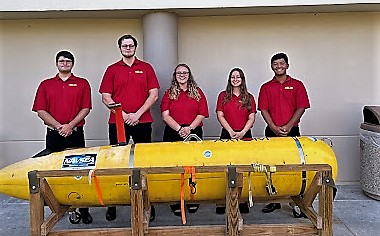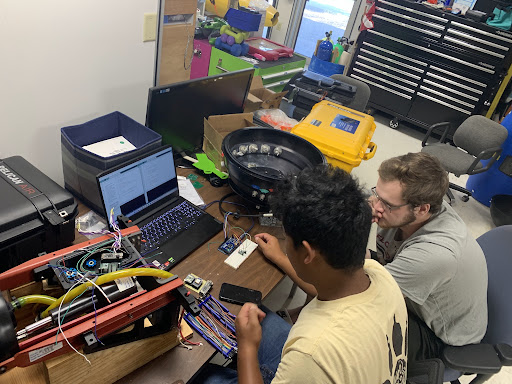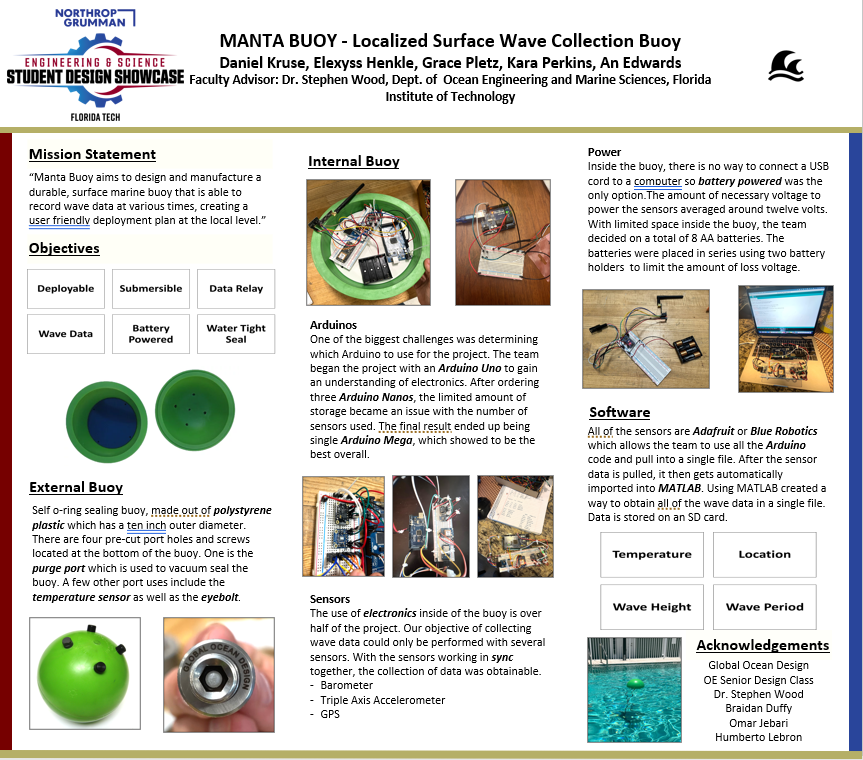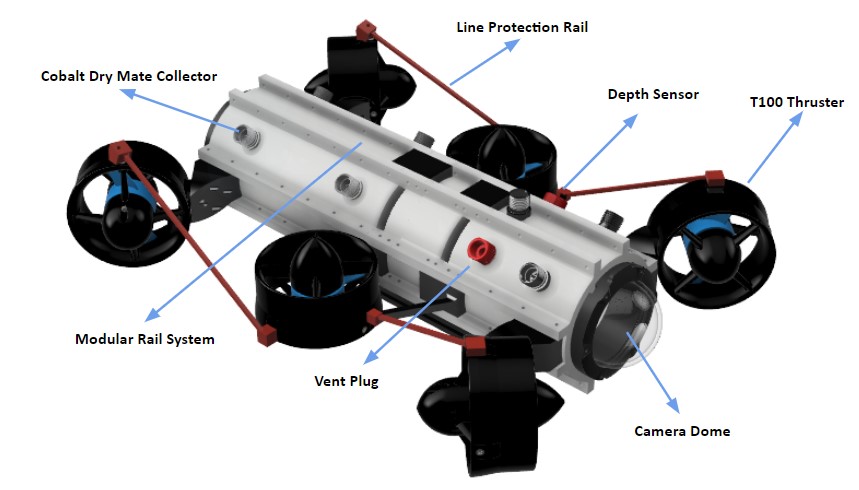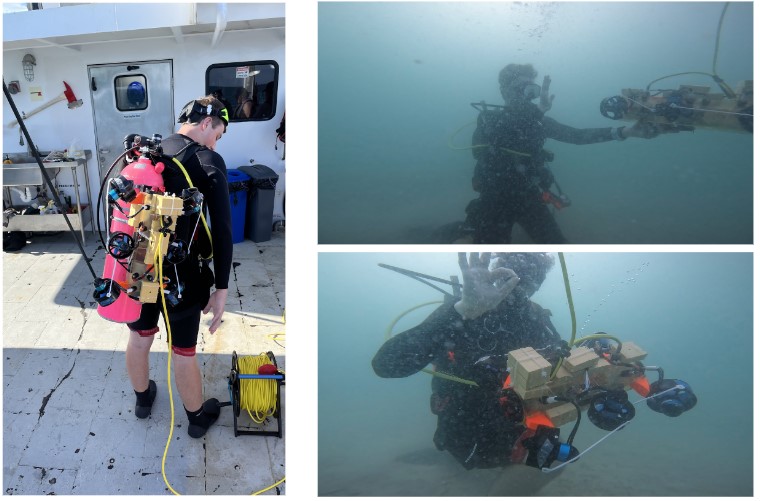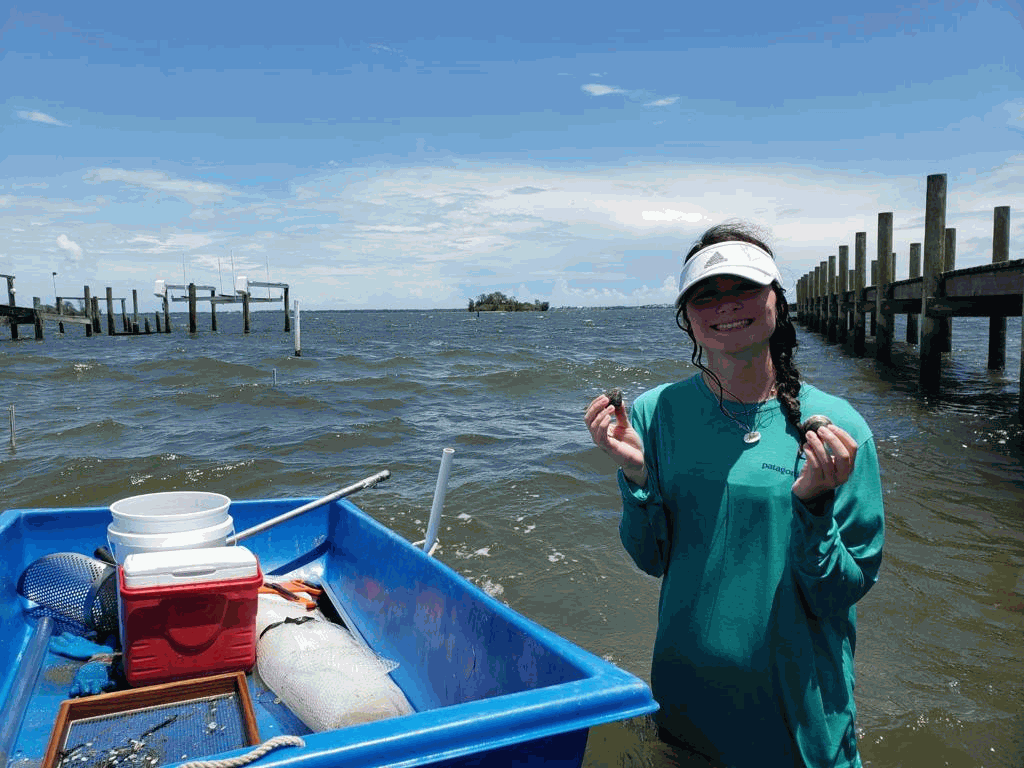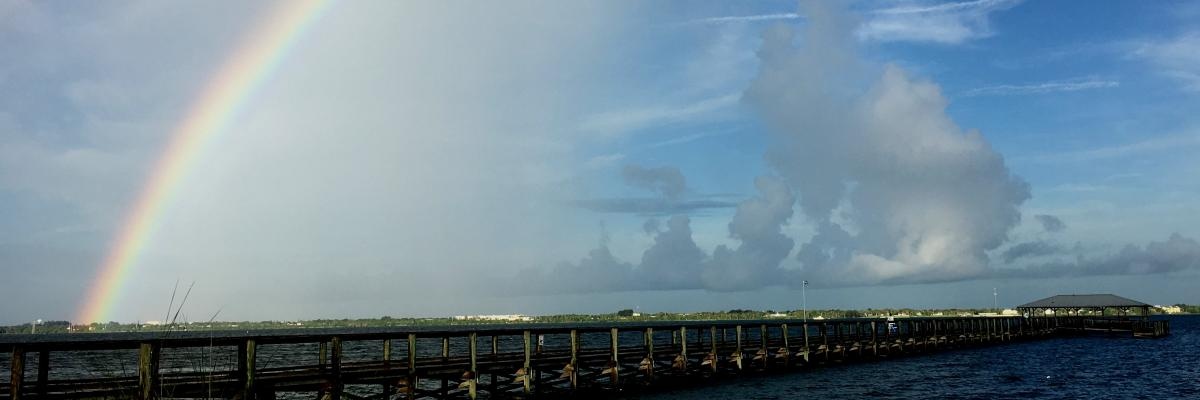Project Summary
In this project, the effect of elevated topography on precipitation rates over Borneo considering the state of the Madden-Julian Oscillation (MJO) is analyzed. The question is would Borneo in a flat Maritime Continent (MC) rain more or less than the topographically diverse reality? Additionally, how does the state of the MJO affect this predicted difference in the model? Challenges to this research include precision of modeled output, accuracy of the data set used, and boundary/initial conditions. To answer this question, precipitation over Borneo in a flat MC is compared to normal (control) conditions. This comparison is applied for the month of the data set, then separately for the inactive and active phases of MJO within the data set (the first and second half of the month, respectively).
Utilizing GRADs, data from the Weather Research and Forecasting model (WRF) is displayed, compared, and analyzed using diagrams and a results table. A Hovmoller diagram (longitude time series) is used to decipher the state of the MJO and its temporal distribution within the data set. Precipitation charts show the distribution over Borneo in a normal and flat MC during the entire month, then separately during the inactive and active stages of MJO (easterly and westerly wind regimes, respectively). The results table shows the mean precipitation rates over Borneo for a control and flat MC. All the flats displayed increased precipitation rates when compared to the controls. The results table also shows the difference between the control and flat as well as the percent reduction. The active phase of MJO (westerly wind regime) showed a larger difference between flat and control than the inactive phase (as well as the averaged data set for the whole month).
The land mask condition flattened the entire MC, not only Borneo, which led to the model predicting more precipitation over Borneo. This increased precipitation is likely due to increased available moisture and convective available potential energy (CAPE) during both phases of the MJO in a flat MC. In the MC, there is more land to the East of Borneo than to the West, hence the reason the active MJO period has a larger precipitation difference between flat and control than the inactive period. When flattened, the presence of more expansive land east of Borneo (Papua New Guinea and eastern Indonesia) will lead to relatively drier synoptic inflow over Borneo during inactive MJO (easterly winds) due to precipitation over the flat islands to the east. This contrasts to the active MJO period (westerly winds) in a flat MC, where the Indian Ocean can supply CAPE and available moisture to Borneo relatively more easily from the west across Malaysia and Western Indonesia.
In the real world, Borneo’s mountainous terrain increases precipitation due to forced ascent. Borneo also has diurnal coastal precipitation patterns that tend to increase rainfall. The mountainous islands around Borneo tend to precipitate most available moisture out of the synoptic inflow, which decreases precipitation. In the model, the flat MC allows more available moisture to reach Borneo without being precipitated over other MC islands. Overall, the flat model showed increased precipitation (regardless of the state of the MJO) due to better dispersal of CAPE caused by the lack of orographic boundaries in the MC.
To assess the effect of elevated topography on precipitation rates over Borneo considering the state of the Madden-Julian Oscillation (MJO), the model’s boundary conditions should create a normal (controlled) MC and differentiate only between a normal and flat Borneo. This work demonstrates the importance of initial and boundary conditions on models and forecasts. In the future, analyzing the effect of elevated topography on precipitation rates over Borneo considering the state of the Madden-Julian Oscillation (MJO) should be done without flattening the MC islands surrounding Borneo, and by using more specific boundary conditions that only differentiate between a flat and controlled island of Borneo.
Project Objective
Using data processed with GRADs, from the Weather Research and Forecasting model (WRF), the effect of elevated topography on precipitation in Borneo during opposing wind regimes is assessed spatially and temporally. Comparison of modelled precipitation amounts in a normal (control) and flat Maritime Continent (MC) during the first and second half of the month of April (2009) intendeds to display the effect of topography on precipitation over Borneo considering the Madden-Julian Oscillation (MJO).
Manufacturing Design Methods
Using data from the WRF, diagrams displaying the difference between modelled precipitation given elevated topography (control) and modelled precipitation given flat topography (flat). The data used for precipitation modelling in Borneo spans from April 1 to April 30, 2009. The model uses 41 sigma levels below 10 hPa (Tan et al. 2018). Anomalies are calculated by the difference between mean and actual values of precipitation at each grid point. A Hovmoller graph of longitude and time for prevailing easterly and westerly winds over Borneo (state of MJO) is displayed for use in analysis of precipitation distribution. The mean precipitation of a control, flat, and difference are given for April. Easterly (inactive MJO) and westerly (active MJO) wind regimes occurred during the first and second half of the month respectively, so each regime is represented separately in their own plot for mean precipitation.
Specification
The land mask affects island precipitation over Borneo by increasing the convective available potential energy (CAPE) of the MC. Usually, the island of Sumatra is to Borneo’s East, and Papa New Guinea is to its West. The convection that occurs over neighboring islands generally leaves the inflow of Borneo drier than a flat MC regardless of the state of MJO. If the moist/warm equatorial ocean air can better distribute around the flat MC, then the model suggests precipitation would be enhanced over Borneo. Given a flat MC, CAPE would be more available over Borneo via westerly inflow from active MJO or easterly inflow from inactive MJO. Given MC orography, it is logical that the elevation of the mountainous region on Borneo has an effect to increase precipitation. Coastal diurnal cycles are an observed example of vertical forcing by elevated topography (Strachan, 2007). The precipitation difference (between control and flat MC) is more evenly distributed for the first half the month (easterlies) than for the second (westerlies). The active MJO has a more notable precipitation difference between between flat and control when compared to the inactive MJO. The boundary parameters and initial conditions are fundamental to the accuracy of modelling topography’s effect on precipitation over Borneo regardless of the MJO’s state.
Analysis
The elevated mountainous region of Borneo increases precipitation by forcing of ascent, which is apparent by observation of the diurnal cycle. The WRF model indicates if the entire MC was flat, then precipitation would enhance over Borneo due to increased available moisture. The use of the Hovmoller longitude time series successfully indicated the time parameters required to assess the effective state of MJO and the precipitation distributions over control and flat models of Borneo. The accuracy of the precipitation distribution is limited by the boundary conditions. It is modelled by data from WRF that a flat Borneo in a flat MC would rain more regardless of the state of the MJO. It is observable that topographical elevation increases convection in coastal areas and on islands. Future research with a model of a flat Borneo with elevated MC topography boundary conditions could better represent the true effect of elevated topography on precipitation over Borneo.
Future Works
Future research with a model of a flat Borneo with elevated MC topography boundary conditions could better represent the true effect of elevated topography on precipitation over Borneo.
Other Information
Tan et al. (2018). Role of topography on the MJO in the Maritime Continent,
Climate Dynamics. https://doi.org/10.1007/s00382-018-4275-3
Strachan, J. (2007). Understanding and Modelling the Climate of the Maritime Continent, Department of Meteorology
Manufacturing Design Methods
Using data from the WRF, diagrams displaying the difference between modelled precipitation given elevated topography (control) and modelled precipitation given flat topography (flat). The data used for precipitation modelling in Borneo spans from April 1 to April 30, 2009. The model uses 41 sigma levels below 10 hPa (Tan et al. 2018). Anomalies are calculated by the difference between mean and actual values of precipitation at each grid point. A Hovmoller graph of longitude and time for prevailing easterly and westerly winds over Borneo (state of MJO) is displayed for use in analysis of precipitation distribution. The mean precipitation of a control, flat, and difference are given for April. Easterly (inactive MJO) and westerly (active MJO) wind regimes occurred during the first and second half of the month respectively, so each regime is represented separately in their own plot for mean precipitation.
![]()


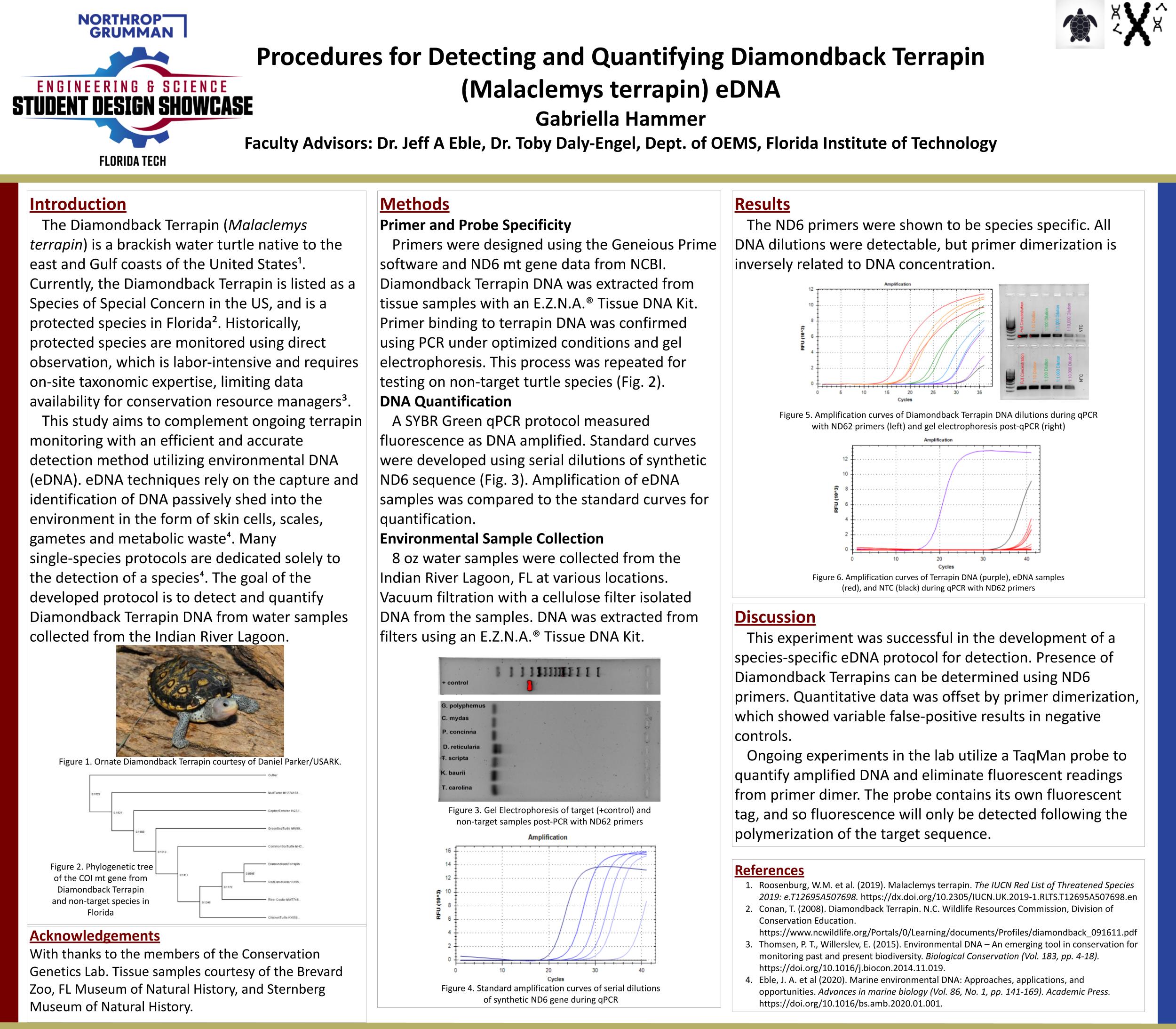
.jpg)
